The Four Species Of Godwits Living In The World Today
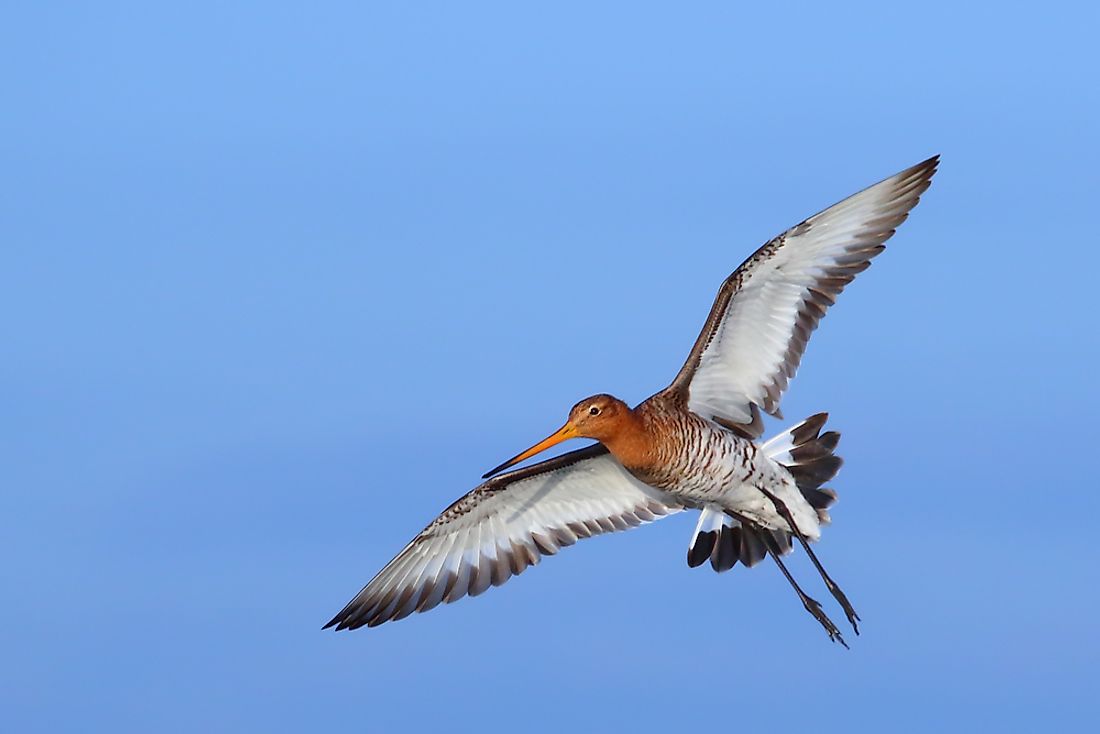
Godwits are migratory birds of the genus Limosa belonging to the bird family Scolopacidae of the order Charadriiformes. The birds migrate from their breeding grounds in the northern parts of Europe, Asia, and North America towards the south. One species of godwit holds the record of flying non-stop for the longest time. The birds have long bills that facilitate their feeding habit. The curlews and dowitchers closely resemble the godwits. However, the slightly upturned or straight bills of the godwits help to distinguish them from the curlews which have crescent-shaped bills. The longer legs of the godwits also help identify them against the dowitchers.
4. Black-tailed Godwit
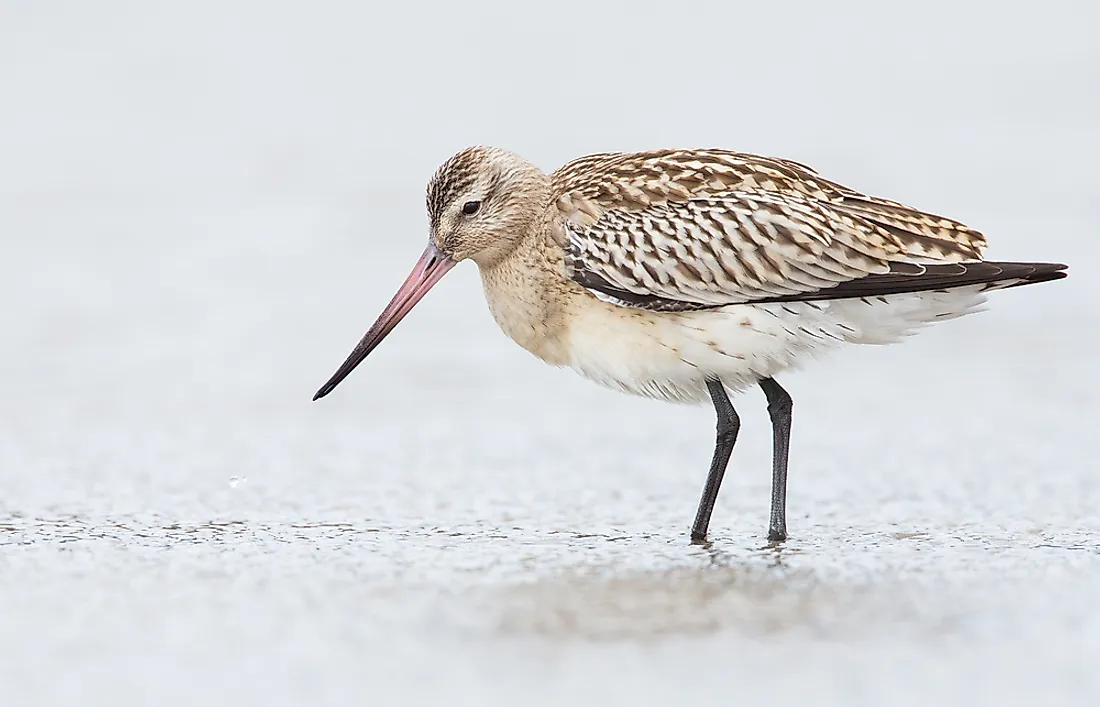
The Limosa limosa is a godwit species whose range stretches from Iceland through Europe to Central Asia. The birds winter as far south as the Indian subcontinent and Australia. Within their breeding range, the birds can be found in damp meadows, bogs, moorlands, shores of lakes, and fens. They usually prefer to live inland and near freshwater habitats. The birds have a dull gray-brown winter plumage but during the breeding season, the chest, neck, and head have orange plumage. The bold white and black wing bars are distinctly visible in flight. The bill color also varies between seasons. In winter, the bill is pink at the base and dark at the tip while in the breeding season, the bill is yellowish to orange pink at the base while the tip remains dark in color. The legs are long and blue-gray in color. The three subspecies of this bird are L. l. limosa, L. l. islandica, and L. l. melanuroides. The birds were extensively hunted in the past and France continues to hunt this species in large numbers even today. Thus, these birds are classified as “Near Threatened” by the IUCN.
3. Hudsonian Godwit
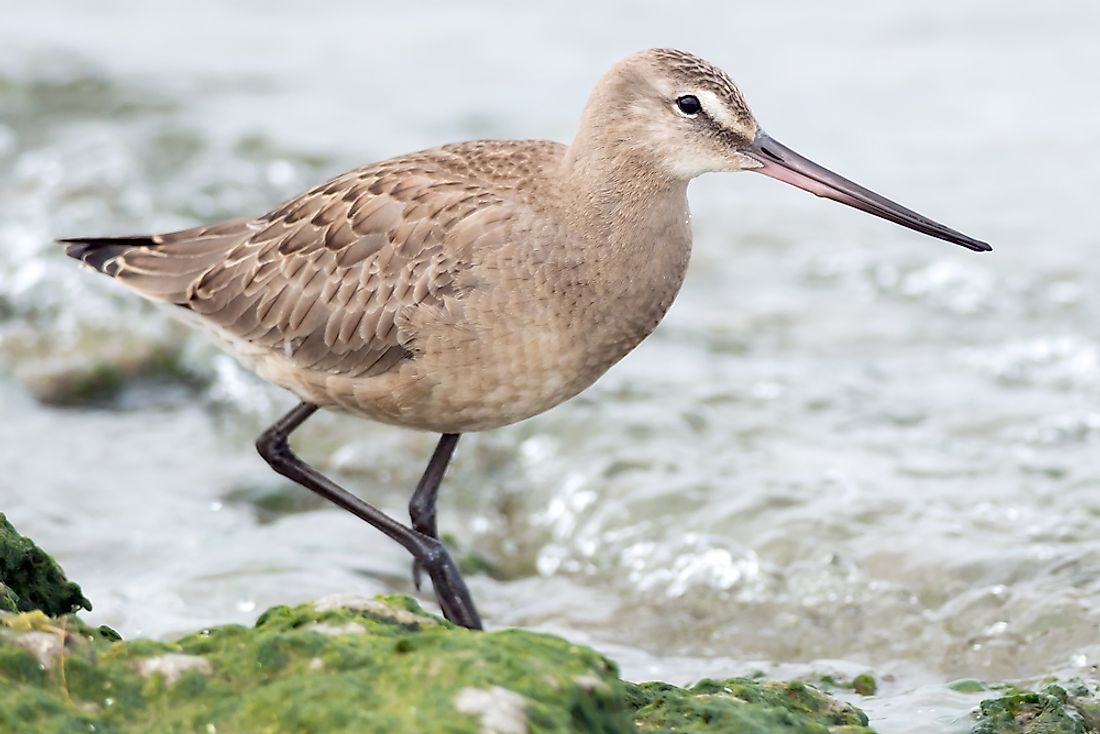
The Limosa haemastica is a godwit species that breed in Alaska, northwestern Canada, and the Hudson Bay. In winter the birds migrate south towards the southern US and Central America and some stray into Europe, South Africa, and Australia. The Hudsonian godwits have mottled brown back and chestnut colored underparts. The beak is pink and dark at the tip The legs are long and bluish-gray. The rump is white and the tail is black. The length of the species is between 370 to 420 mm. The birds nest on the ground in marshy areas and feed mainly on crustaceans and insects.
2. Bar-tailed Godwit
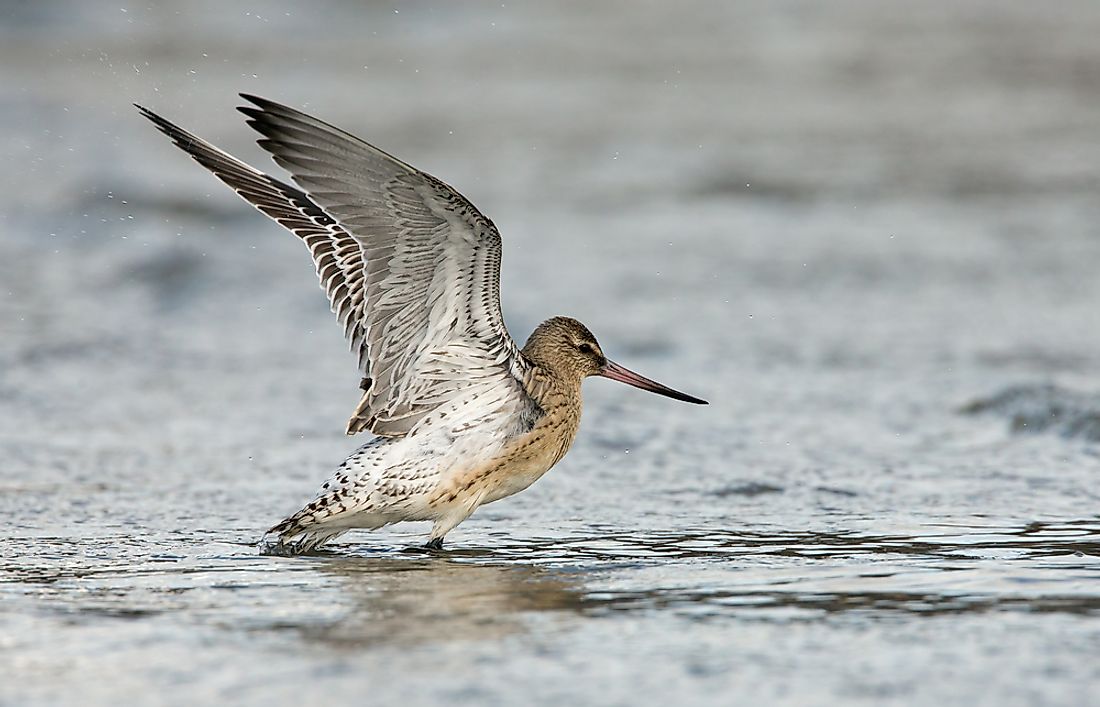
The Limosa lapponica is a wading bird that breeds in the Arctic coasts and tundra of northern Asia, Scandinavia, and Alaska. The birds migrate to warmer tropical and temperature regions as far as Australia during winter. They hold the record of performing the longest non-stop migration and the longest migration without feeding among all species of birds in the world. The bar-tailed godwit has a length ranging between 37 and 41 cm from bill to tail. The birds have a bill that is pink at the base and dark at the tip. The breast and underparts of the bird display a brick-red plumage during the breeding season and an off-white plumage during winter. The back is a mottled gray. The blue-gray legs are relatively short in size. The absence of white wing bars and the presence of a barred tail distinguishes the species from the black-tailed godwit. The birds feed on crustaceans, insects, and aquatic plants. They build cup nests in mossy vegetation and both parents incubate the eggs. The birds have three subspecies: L. l. lapponica, L. l. menzbieri, and L. l. baueri. The bar-tailed godwit is a “Near Threatened” species.
1. Marbled Godwit
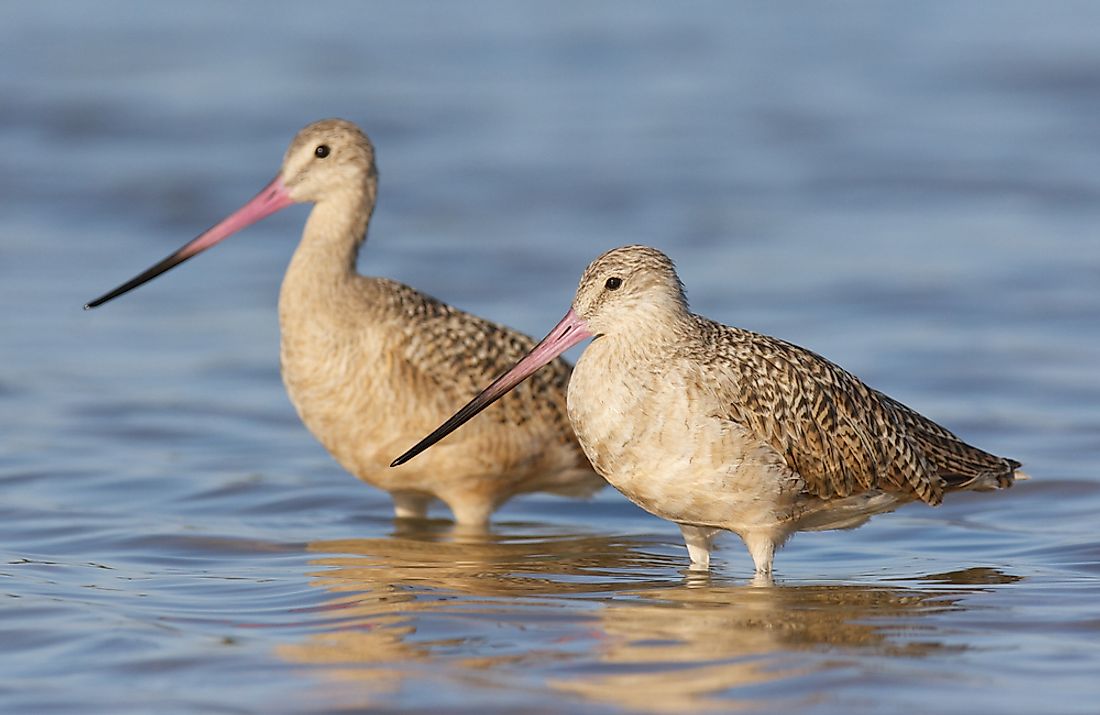
The Limosa fedoa is the largest godwit species that breed in the western Canadian Prairies and a part of the US Great Plains region. The birds migrate to warmer areas for wintering. Coasts of California, Mexico, Gulf of Mexico and parts of South America serve as the wintering grounds of this bird. The marbled godwit ranges in size from 40 to 50 cm. Body weight varies between 240 and 520 g. The birds have a dark, mottled back and pale brown underparts and breast. The flanks and breast also feature dark bars. The long pink colored bill is dark towards the tip. The hairy legs are blue-gray. The birds feed on insects and crustaceans and occasionally on aquatic plants and can be observed in mudflats, beaches, and marshy habitats. Habitat loss and hunting have reduced the population of these birds but since the species is still widely distributed, it is still recognized as a “Least Concern” species. There are two subspecies of the marbled godwit: L. f. beringiae and L. f. fedoa.











